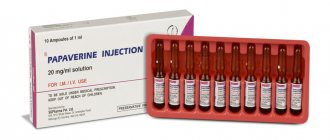Vaccination against rubella is the main and only way to avoid exposure to infection. The causative agent of the disease, rubella virus, poses virtually no threat to children, but is very dangerous for adults, especially pregnant women. Infection in the early stages causes congenital pathologies, intrauterine fetal death or stillbirth. In this regard, WHO, as part of the Global Immunization Action Plan, calls on all countries to take measures to control and completely eliminate rubella.
Prevention of rubella
Rubella is a viral disease with a rapid and mild course. In most cases, it affects children and young people. Rubella virus is a carrier of the disease, transmitted from sick to healthy by airborne droplets: when talking, sneezing, coughing. Viruses are able to survive in the external environment for a short time, so you can become infected from objects, through dirty hands, or other people's things for several hours after the virus gets on them. A pregnant woman can transmit the virus to her fetus transplacentally. In addition to the generally accepted name, synonyms are used for rubella: third disease, German measles, measles rubella. We discussed a detailed description of the disease, routes of infection, and its consequences for children and adults in the article “Rubella.”
Content:
- Prevention of rubella
- Vaccination against rubella
- Is it worth getting the rubella vaccine?
- Rubella vaccination schedule
- Rubella vaccination and pregnancy
- Types of rubella vaccines
- Complications, consequences and side effects after rubella vaccination
- How to reduce the likelihood of complications
- Contraindications to rubella vaccination
- Anti-epidemic measures for rubella
- Question answer
This infection is characterized by epidemic outbreaks. This is due to the rapid transmission of the infectious agent in closed communities: schools, kindergartens, nurseries, hospitals, etc. In temperate climates, such quarantines occur approximately once every 5 years, in spring and autumn. Children experience the full range of symptoms within one week without serious consequences. The adult body reacts to infection more vividly, the symptoms are more pronounced and last longer, with possible complications. Children whose mothers were ill in the first trimester of pregnancy are born with pathologies of internal organs, deafness, visual impairment, and developmental delays. In some cases, intrauterine fetal death is recorded.
Prevention of rubella is an important anti-epidemic measure that is provided and controlled by the state. The main factor in preventing the disease remains immunization of the population, that is, vaccine prevention. This also includes isolation of patients, unvaccinated (susceptible) men and women, teenagers should avoid contact with the sick. Infected people are able to infect susceptible people a week before the first symptoms appear and at least another week after them. Infants with congenital rubella are sources of the disease for a year after birth, sometimes longer.
Rubella virus is covered with a shell that retains its activity in the external environment. However, this shell is easily destroyed by disinfectants. Preventive measures include the treatment of premises, furniture and household items. To prevent epidemics, it is recommended to use solutions of ethyl alcohol, chlorine, and formaldehyde. Personal hygiene is a preventive measure against many infectious diseases, including German measles. To reduce the incidence of congenital rubella syndrome (CRS) in children, women of reproductive age are recommended to have their blood tested for rubella antibodies. This should be done at least three months before the expected pregnancy. All girls who do not have immunity to rubella virus should be vaccinated.
Vaccination against rubella
German measles, known for many centuries, suddenly came into the spotlight in the middle of the last century. In 1965, the epidemic broke out throughout Europe, reaching the United States by 1964. Millions of people have been ill, including adults, with subsequent complications. The consequences of this pandemic have attracted the attention of scientists to the problem of rubella infection. In America alone, in two years, 20 thousand babies were born with congenital deformities caused by maternal illness. By 1965, it became clear that vaccination against rubella was the primary task of scientists.
In the same year, doctors managed to obtain several weakened strains of rubella virus in the laboratory. The clinical trial lasted almost three years and by 1970 the vaccine finally went into commercial use. In 1971, a vaccine based on a strain isolated from human cells was licensed in Europe. It is designated RA 27/3 and is still in use today. Over time, it was licensed in the United States and several other countries. The mass immunization scheme in Europe, the UK and the States has shown a gradual decline in CRS cases and the disease in general. In 2015, the Region of the Americas was declared completely free of endemic rubella.
Today, out of 194 countries, 152 states have adopted a rubella vaccination plan. However, within each country the percentage of diseases varies, as do the cases of CRS. The WHO Strategic Advisory Group notes that the burden of rubella cannot be completely eliminated due to insufficient vaccine distribution and individual refusal to inject. In Russia in 2021, from January to June, only 3 cases of rubella were registered (according to ROSPOTREBNADZOR “Information on infectious and parasitic diseases”).
Is it worth getting the rubella vaccine?
During illness, the body produces antibodies that eliminate the virus when it encounters it. These antibodies persist after infection for life; only in isolated cases throughout the planet are re-infections recorded. After developing immunity, a person becomes immune to the virus, and if he encounters it again, he is no longer at risk of getting rubella. Vaccines use weakened viruses; the immunity that the body develops during vaccination will last for a period of 10 to 21 years, after which the person becomes susceptible again and revaccination is carried out.
A mild illness in children, it can be extremely dangerous for unprotected adults. Thus, women without vaccination and a previous infection can be infected during pregnancy. This leads to miscarriages, stillbirths, congenital deformities and pathologies of internal organs. In adolescents and adults, in approximately one case out of 7 thousand, after infection, a complication occurs in the form of encephalitis - brain damage, which in some cases can lead to death.
Due to the dangerous impact of the virus on the adult population and unborn children, mandatory vaccination was introduced. Today, everyone can be vaccinated if they do not have immunity, but they may not be vaccinated due to personal circumstances. Also, each parent can write a refusal to vaccinate their child, bearing responsibility for the possibility of the disease and its complications. The medical community is alarmed by the trend of vaccine refusal, as this may further lead to a new susceptible generation that will produce offspring with pathologies and congenital anomalies.
International experience in the use of rubella vaccinations has shown that effective protection against epidemics and severe consequences is provided by mass vaccination of children at the age of one, revaccination at 6-7 years of age and vaccination of teenage girls. The need to immunize adolescent boys and men is because they can transmit viruses to susceptible women of childbearing age.
Despite the fact that in most cases children tolerate rubella very easily, even among them there may be side effects after the disease. These include:
- encephalitis;
- thrombocytopenic purpura (reduced blood clotting);
- damage to the cardiovascular system.
Children who have an underlying illness, such as diabetes or bronchial asthma, have a more difficult time getting rubella than healthy children. Therefore, sick children especially need protection; this applies to absolutely all infectious diseases.
Unfortunately, many parents perceive the need for vaccination in their own way, as a favor to their pediatrician, clinic or state, without weighing their own ambitions and the future of the child and his offspring. Getting vaccinated is the right of every person to be protected from infections, and not at all an obligation to anyone. The sad experience of the lack of vaccination and the terrible consequences of the epidemic suggests that the vaccine was invented and made mandatory for a reason. It is definitely worth doing for both children and adults. The main thing is to take precautions: a preliminary examination is required by a pediatrician for children and adolescents, and a therapist for adults, in order to exclude acute diseases for the current period. If any are determined, rubella vaccination is postponed until two weeks after recovery.
Contraindications
There are a number of cases in which the vaccine is contraindicated:
- allergy to substances included in the vaccine; presence of an immunodeficiency state;
- pregnancy;
- period of breastfeeding;
- infectious disease, vaccination is postponed until recovery;
- immunosuppressive conditions due to taking corticosteroids, chemotherapy;
- if you have had a blood transfusion within the last few months;
- postoperative recovery.
Rubella vaccination schedule
All countries that have adopted a measles and rubella control program follow the same immunization schedule. The first vaccination for children is carried out at the age of 12 months. Then revaccination is carried out at 6-7 years. Since immunity obtained in this way does not last a lifetime, adolescents are additionally vaccinated at the age of 12-14 years. In addition, every woman of reproductive age from 18 to 40 years old can be vaccinated when planning a pregnancy. Adult men may also be vaccinated to reduce the risk of disease if the patient is not immune.
The vaccination calendar includes only mandatory vaccinations at 1 year, 6-7 years and in adolescence.
Revaccination
The vaccine contains weak infectious agents; over time, it simply loses its resistance to the virus. To strengthen immunity to rubella virus and extend the duration of the drug, a repeat procedure is performed after a few years. If revaccination is not done on time, the body becomes again susceptible to infection with the rubella virus. The antibodies produced are lost over time and the person will get sick at an older age, which is much worse.
Vaccination procedure
On the day of vaccination, you need to make sure that the child or adult does not have an acute course of any disease. To do this, the pediatrician must examine the babies to eliminate the possibility of contraindications. During exacerbations, this procedure is not carried out. Adults are recommended to donate blood for the presence of antibodies, which will indicate whether a rubella vaccination is needed. Persons susceptible to allergies are advised to take an antihistamine before vaccination.
Immunization is carried out taking into account the following rules:
- the patient must be healthy, without exacerbations of any diseases;
- the procedure is carried out exclusively by a medical professional in the clinic’s office;
- the syringe must be disposable and opened before the patient;
- The ampoule is treated with an antiseptic before opening and opened before immunization;
- the injection site is treated with an antiseptic;
- After administration of the drug, the injection site is again treated with an antiseptic.
For one-year-old children, the vaccine is given in the thigh area, but it is never placed in the gluteal muscle. For older children, teenagers and adults, the injection is given in the area under the shoulder blade or in the shoulder. This vaccine works individually, side effects are extremely rare, and there is no data on severe consequences.
During the first 24 hours after vaccination, it is advised not to wet the injection site, as this may affect the occurrence of a local skin reaction. It is also better to avoid large crowds of people to avoid getting another infection. During the first hour after the procedure, you need to monitor the body’s reaction; if any extraneous symptoms appear, consult a doctor. For the same reason, patients are advised to spend the first hour after the injection in or near the clinic. These recommendations are common to all vaccinations.
The duration of post-vaccination immunity is usually 10-20 years, after which the immune response decreases. You should also take into account the individual characteristics of immunity; a vaccinated person can become susceptible to the virus after 5 years, and sometimes antibodies persist for 40 years. Therefore, WHO expert recommendations call for the adult population to be vaccinated every decade.
When is revaccination carried out?
Children are re-vaccinated against rubella at six to seven years of age. This period is optimal for the formation and maintenance of immunity against infection. Please note: if vaccination was first carried out later than 12-15 months, then subsequent administration of the drug is also possible no earlier than six years later.
In addition, experts insist on additional revaccination against the causative agent of the disease for girls 12–14 years old. This measure will significantly reduce the likelihood of rubella infection in girls during pregnancy, since they will have active immunity.
Rubella vaccination and pregnancy
Long-term observations of the epidemiology of rubella have led to the conclusion that the probability of damage to the fetus during maternal illness is up to 90%. Considering the severe consequences of rubella infection during pregnancy, the presence of immunity for women is an extremely important condition. Girls of reproductive age are recommended to be tested for the presence of antibodies. If there is no immunity, the patient is vaccinated. Immunization is possible at least three months before the onset of gestation. During the gestation period, vaccination is not carried out. However, it is possible that after vaccination it is discovered that the woman has become pregnant.
The WHO guidelines for the diagnosis of rubella and measles present the results of research in this regard. Observations of 1,000 pregnant women who were unintentionally vaccinated showed that all of them gave birth to healthy children. That is, there is no confirmed evidence that the administered virus can lead to CRS. However, pregnant women are not intentionally vaccinated for fear of incidents. Every girl planning a child can be tested for immunoglobulins (antibodies) and vaccinated.
Also, in families with pregnant women susceptible to the virus, it is recommended that all family members be tested and immunized. This applies to both children and adults. Families with an older child who has not been sick, has been vaccinated once, or has not been vaccinated at all, should be especially vigilant.
Types of rubella vaccines
Almost 50 years have passed since the first attenuated (weakened) strains of rubella virus were obtained. However, the vaccine began to be considered mandatory only in 2000. Today medicine uses two types of injections: combined and monovalent. The development of combination vaccines is considered the greatest achievement of modern vaccine prevention. They protect against several possible ailments at once, but there are suspicions that monovalent formulations have a lower risk of adverse reactions.
Monovaccines against rubella
These drugs are based on rubella viruses only. Infectious agents in it are weakened and, when introduced into the body, cause the same immune response as during normal infection. These vaccines rarely cause reactions and are therefore considered low reactogenic. Also, the introduced virus cannot be transmitted to other people, unlike the true one.
Today, the following mono-vaccines against the “third disease” are used:
- "Ervevax" made in Belgium. Suitable for children, prepubertal girls, and adult women. Like all other anti-rubella compounds, it is based on live strains. The developed immunity lasts for at least 15 years. It is most often used to vaccinate older patients, since children in most cases are administered multicomponent vaccines. It can be used on the same day with DPT, measles, and mumps vaccines.
- “Cultural live attenuated rubella vaccine”, which is produced by Croatia, is registered in Russia. Used for prophylaxis in all population groups, prepared on the basis of the RA 27/3 strain. It is often used for vaccination in clinics in the CIS countries; it can also be purchased as prescribed by a doctor for unscheduled immunization.
- Rudivax is a vaccine produced in France. It is also monovalent and provides immunity for 10 to 20 years, sometimes more. Can be used for all age groups. It is considered very popular among imported vaccines, as it is highly effective and has a very low threshold of side effects.
- The Russian “Live Rubella Vaccine” is created on the basis of the same strain – RA 27/3. Unlike imported ones, it is prepared on the basis of quail egg protein, so it can be used for allergy sufferers. Acts as the main source of vaccination in most CIS countries, applicable for children 12 months, 6-7 years old, adolescents and adults. Side effects are minimal and rare.
All these compositions allow for the prevention of rubella, have minimal consequences, and are easily tolerated by patients. However, such narrowly targeted formulations are inconvenient for routine vaccination. Therefore, when immunizing children, combined multicomponent vaccines are more often used.
Three-component vaccines
The obvious advantage of such vaccines is that they contain weakened viruses of three types at once. Accordingly, one injection provides protection against several diseases simultaneously. Such formulations are interchangeable, that is, they can be replaced with three separate injections.
However, performing one procedure is much easier, primarily for the patient himself. Such three-component formulations develop immunity against measles, rubella and mumps (mumps). There is no domestic vaccine, so only imported ones are used. Today, the following three-component vaccines are used in Russia and the CIS countries:
- American MMR-II is considered the most popular multicomponent vaccine. It ensures the production of antibodies to the three most common childhood diseases: measles-rubella-mumps. It can be administered on the same day as DTP, chickenpox vaccine, or polio vaccine. They are taken to separate areas of the body using sterile syringes. Prepared on the basis of chicken egg white.
- The Belgian Priorix is the second most popular among multivalent drugs. Like MMR-II, it protects against three types of virus. It is created on the basis of chicken egg protein and neomycin. The intensity of side effects and their frequency are no different from other formulations, therefore it is recommended by doctors for vaccination of children and adults.
The Russian live attenuated bicomponent vaccine against mumps and rubella is also used to protect against rubella.
It requires another injection of measles vaccine, which is not very convenient.
Domestic
The advantages of domestic vaccines are that they are more accessible. If we are talking about monovalent compounds, they are given to children and adolescents free of charge as part of the state vaccination calendar. You will have to buy a bicomponent vaccine, but it will be much cheaper compared to imported ones. In addition, Russian vaccines have a very significant advantage - they are prepared on the basis of hypoallergenic quail egg protein. All imported vaccines are not suitable for people with an anaphylactic allergy to chicken egg white; in this case, there are no analogues to Russian drugs.
Disadvantage: there are no three-component vaccines among domestic ones, so the injection has to be done twice if a bicomponent and a monovalent measles vaccine are combined. Sometimes you have to visit the clinic three times if immunization occurs with separate vaccines.
Imported
Advantage: imported drugs are easy to use, as they are three-component. This allows you to prevent several diseases at once with one administration. However, there is no direct evidence of increased side effects. Immunity to each individual virus is developed and maintained as effectively as with the introduction of monovalent vaccines.
The disadvantages include the price of these vaccines, since they are not supplied to clinics for mass immunization. They are purchased independently. The Belgian Priorix will cost about 30-40 dollars, the American MMR-II will cost 20-35 dollars. Prices may vary in different regions and medical institutions.
Vaccine options
The live attenuated rubella vaccine has been used for more than 40 years. A single dose provides over 95% of long-term immunity, similar to immunity developed as a result of natural infection. Rubella vaccines are either monovalent (a vaccine that targets only one pathogen) or, most often, combined with other vaccines, such as measles (MR), measles and mumps (MMR) or measles, mumps and varicella vaccines. (KSKV). In Russia the following are used: live rubella vaccine, live attenuated rubella vaccine, Priorix, MMR-II.
Complications, consequences and side effects after rubella vaccination
Because the vaccine uses a live, weakened virus, it may cause side effects. The fact of using live strains determines both the effectiveness of the vaccination and its possible complications, which are extremely rare. In response to the introduction of an infectious agent, the body produces antibodies that persist for a long time, which protects a person from infection for 10-20 years. When antibodies are produced, the body reacts to the presence of the virus, which is why side effects appear. As a rule, these include erased symptoms of rubella.
Reactions to vaccination at the injection site
Redness sometimes appears at the injection site, and minor pain and itching may occur. In rare cases, lymph nodes located closer to the injection site (in the armpits, on the neck) may become enlarged.
General reactions to vaccination
The general response of the body is also distinguished. After administration of the drug, the temperature may rise slightly, weakness, and cold symptoms may occur. There is no need to treat them with additional medications; they will go away within one to two days. In rare cases, the pediatrician may prescribe auxiliary therapy. It is not recommended to take medications on your own or give them to your child.
In addition, reactions on the skin in the form of bright pink and purple spots are possible. As a rule, it goes away after a few days, but if such a rash appears, it is better to see a doctor to eliminate possible risks. In rare cases, joint pain and signs of arthritis are observed. This side effect practically does not occur in children; symptoms are most often reported in adolescents and adult women. However, they pass within a week.
If the patient is not sufficiently examined, then, against the background of immunosuppression, classic rubella develops after the administration of the vaccine. Immediately after the injection, you must wait at least half an hour at the clinic. This precaution is necessary in order to completely eliminate the risk of severe side effects and provide first aid if necessary.
Features of vaccination
Before vaccination, the child must be examined by a pediatrician. Fever, colds, and diarrhea are temporary contraindications for vaccinations. Combination vaccines are given into the muscle.
At the age of one year, children are usually given an injection in the thigh; at an older age, it can be given in the shoulder muscle or under the shoulder blade.
The rubella vaccine cannot be given in the buttock, since due to the well-developed layer of subcutaneous fat, the rate of absorption of viral particles is weakened.
Vaccination should be carried out observing the following rules:
- vaccine injections are administered only by a specially trained health worker;
- vaccinations are given strictly in the treatment room under aseptic conditions;
- It is necessary to use only disposable syringes with a thin needle;
- before and after the injection, the injection site is treated with a skin antiseptic;
- the ampoule with the vaccine is opened immediately before use;
- a change in the color of the solution in the ampoule is unacceptable; if this happens, the drug is immediately thrown away;
- After receiving the vaccine, the patient must remain under staff supervision for at least 30 minutes.
After vaccination, pediatricians usually recommend not going out for walks on the first day and try to avoid crowded places for a week or two.
How to reduce the likelihood of complications
All vaccines are low reactogenic, meaning the chance of developing side effects is very low. However, they are possible, so patients would like to further reduce possible risks. Often such consequences depend on the patients themselves. To reduce the possibility of complications, it is recommended:
- Before vaccination, get examined and prepared. This is a very important part of the entire process that is often neglected. Vaccinations have their own contraindications and it is very important to identify them before the process itself. It is necessary to be examined to find out if there is an allergy to one of the components of the vaccine or to the excipients that are included in the composition, or the presence of a disease incompatible with the vaccine.
- Consult with your doctor which vaccine you plan to administer, what its possible consequences are, what to do with them, and how long the injection will last. In short, good preparation will reduce the number of unnecessary worries.
- 2-3 days before vaccination, you should avoid crowded places to prevent infection with influenza, acute respiratory infections or acute respiratory viral infections. Also, for 3 days after the procedure, you should avoid contact with large numbers of others.
You can wash and walk after the vaccine. It is recommended to take a shower rather than a bath, and walk in non-crowded places. Before the injection and for the first time after the injection, it is also important not to contract another infection. It is advisable for adults not to drink alcohol before undergoing tests and vaccinations.
Features of the disease
Rubella is an acute infectious disease that occurs due to the spread of the Rubella virus throughout the human body. The pathology causes a characteristic skin rash and general intoxication of the body. The pathogen enters the body by airborne droplets, penetrating the epithelial membranes of the respiratory tract. The disease most often affects children of preschool and primary school age who have not been vaccinated.
The incubation period of rubella lasts from one and a half to three weeks, after which a bright papular rash appears on the patient’s body, excluding the feet and palms. The specialist makes the diagnosis after a clinical examination of the patient based on the existing symptoms:
- The patient's body temperature rises. At the peak of the disease, febrile fever is observed, reaching 38.5-39 °C.
- Intoxication of the body. The disorder is manifested by nausea, weakness, aching joints, and myalgia. Patients also complain of cephalalgia and dizziness with minimal physical activity.
- The vast majority of patients have lymphadenopathy - enlarged lymph nodes. Rubella affects the neck and back of the head. This symptom is a characteristic sign of the disease.
- Skin rashes appear within two days and last from 2-3 days to a week. The rash appears on the skin of the face, then spreads to the neck and chest, and later to the entire surface of the body.
Attention!
The rubella rash does not itch or flake off. The extensor surfaces of the limbs, buttocks and lower back are most severely affected. After the end of the acute period of the disease, the papules disappear, leaving no pigmentation or scars.
Contraindications to rubella vaccination
Since the composition of the drugs is based on live strains, they can give an undesirable effect if contraindications are not taken into account. Not all children and adults can be vaccinated; you can find out whether it is possible to get vaccinated or whether it is better to refuse it after a detailed examination. The vaccine cannot be administered in the following cases:
- With exacerbation of chronic diseases, acute infections. Such restrictions are temporary and after recovery a person can be vaccinated.
- If you have a severe allergy to one of the components of the drug. In this case, only anaphylactic reactions are taken into account; mild manifestations (redness of the cheeks, small rash, etc.) are not a contraindication to vaccination.
- If you are allergic to aminoglycosides;
- For immunodeficiency: AIDS, HIV, malignant tumors, blood diseases.
- Complications and negative reactions from the previous administration of this vaccine.
Also, no live vaccines are administered during pregnancy, including rubella vaccines. Against the background of immunodeficiency, the patient must be constantly monitored; in the absence of clinical manifestations, immunization can be carried out, and given the weakness of the immune system, it is even very desirable. If, after vaccination, a child or adult has a very high temperature, difficulty breathing, or other symptoms that bother you, you should definitely consult a doctor.
When to vaccinate if there are contraindications
There are a number of contraindications in the presence of which it is not recommended to administer the rubella vaccine:
- dysfunction of the immune system, immunodeficiency states;
- allergic reaction to chicken protein or the drug Neomycin;
- severe pathological reaction to a previous vaccination.
These factors are absolute contraindications to vaccination. That is, if they are present, the child is prohibited from receiving vaccinations. If a child is diagnosed with an infectious disease, an exacerbation of a chronic pathology, or an allergy, then vaccination is postponed for 6-7 months. After recovery, the drug is administered according to a schedule with an interval of 6 years.
Attention!
If a child is not vaccinated at 12-15 months, then in the future he will be given a monovaccine rather than a three-component one. It contains only antibodies against rubella.
Rubella is a viral disease that is acute and highly contagious. The pathology occurs quite easily in young children, but in adults, especially pregnant women, it can cause the development of various complications. Vaccination against rubella is an important measure that allows a person to develop immunity against the disease. Normally, vaccination is carried out at least twice, even if the patient has already suffered from this infection.
Anti-epidemic measures for rubella
Avoiding new rubella epidemics is an important task because the disease is more complex than is commonly believed. The only effective way to prevent a pandemic is still vaccination. At the same time, it is important to carry out revaccination among the adult population, since complications when infected in adult men and women are much more severe. Additional preventive measures, such as disinfection of premises and isolation of patients, are ineffective. The long incubation period is asymptomatic, so the viruses are transmitted through the air and infect all susceptible persons.
Question answer
Does my child need a rubella vaccine?
Best materials of the month
- Coronaviruses: SARS-CoV-2 (COVID-19)
- Antibiotics for the prevention and treatment of COVID-19: how effective are they?
- The most common "office" diseases
- Does vodka kill coronavirus?
- How to stay alive on our roads?
If a child has no identified contraindications, vaccination is definitely needed. If we are talking about revaccination, it is important to take into account the reaction to the first procedure: there were complications - we don’t vaccinate, if there were none - we definitely do.
Age and timing of vaccination from one year to 16 years
The first injection is given after a year, then the first revaccination at 6-7 years, the second revaccination at 13-14 years. If for some reason a child or teenager has not had any immunization before the age of 16, it must be done after an examination.
Which rubella vaccine is best?
Vaccines are either live or inactivated (non-living); combined and monovalent. Absolutely all rubella vaccinations are live. Further, among them there are monovalent ones, they contain only a weakened rubella virus. Combined is the one that contains three weakened viruses against mumps, rubella, and measles. From the point of view of convenience, combined ones are better, since only one injection is needed. Vaccines are similar in terms of effectiveness and risk of side effects.
Where to get vaccinated
If there are no contraindications, anyone can get vaccinated. This can be done in the vaccination office at the clinic at your place of actual residence. To do this, you need to find out the days on which the office is open for this vaccination. Private licensed clinics can also provide vaccinations. You can call a doctor to your home from a private medical institution. This service is not paid for in government agencies.
Do adults need immunization?
Women of reproductive age are strongly recommended to donate blood for antibodies and get vaccinated if they are not immune. Unvaccinated men without antibodies are also better off getting immunized, since rubella is quite difficult to tolerate in adults.










